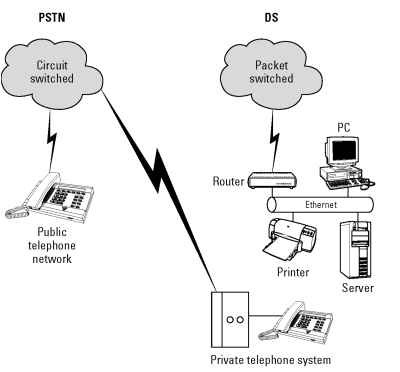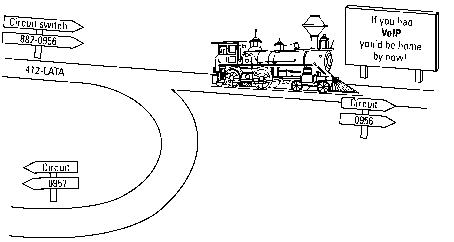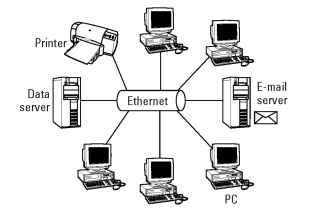The corporate sector’s thirst for leasing dedicated DS lines was unquenchable. Soon a dilemma emerged as to how to distinguish the circuit-switched network and the newer dedicated network, which used packet-switching technology. Since its inception, the circuit-switched network was a public carrier services network. The DS network was being called dedicated, or private, because no one but the customer paying for the DS lines was permitted to use them.
Public versus private a.k.a.
Confused over the different terms for the PSTN comes to the rescue, showing the most popular and dedicated networks? The following list also-known-as terms for both.
PSTN DS
public private
public switched telephone network private dedicated transport network
public telephone network digital services network
switched network dedicated network
circuit switched packet switched
It wasn’t a great leap to make the distinction between public and private types of services. At this point, the name public switched telephone network (PSTN) began to be used to characterize the circuit-switched network. Eventually, the PSTN would be referred to by the telecommunications industry as simply the switched network. The DS name stuck with the network that provided private dedicated transport services. Eventually, the DS network would be referred to as simply the dedicated network.
Figure 2-4 illustrates the physically separate PSTN and DS networks.
POTS telephony continues to use circuit-switched protocols that don’t packe-tize telephony signals. (See topic 1 for an explanation of packets.) POTS signals travel from one line to the next line on a given circuit of lines, just like in the fifth-grade science experiment using tin cans and a string. Another good way to understand circuit-switched protocols is to think about a railroad system. Trains must switch tracks along a circuit of tracks based on the destination of the railroad cars traveling over the tracks. The direction of the train is determined by the physical tracks that the train uses. Figure 2-5 illustrates such a circuit-switched train.

Figure 2-4:Noncon-verged PSTN and DS networks.

Figure 2-5:The circuit-switched network is like a train traveling on physical tracks.
VoIP technology has enabled telephony signals to run over dedicated networks using packet-switched protocols. One of the preferred methods of running VoIP in the corporate sector is to use dedicated lines. Instead of being primarily dependent on the PSTN for its telephone service requirements, companies using VoIP protocols can send and receive telephone calls over their private computer networks. Using VoIP, voice signals can be packetized in a manner similar to computer data packets.
VolP includes the caller and receiver’s network addressing information in the packets sent over the network. If a given circuit on the network is down, VoIP packets can switch to another computer network circuit because the packet is not dependent on the circuit itself for directions. In the previous example, the circuit-switched train is switched solely by the tracks it travels. If the train runs into a broken track, it can’t continue to travel to its destination. VoIP packets can have many alternative routes because the destination address inside the packet tells the network where to route the packet.
Most companies today use packet-switched networks for their computers and separate circuit-switched networks for their voice calls. Figure 2-6 depicts this typical scenario.


Figure 2-6:Companies typically use noninte-grated networks for data and voice.
